With David Cameron’s reshuffle now apparently complete, Gavin Freeguard and Caragh Nimmo update the graphs from the Whitehall Monitor live-blog one last time.
As a result of the changes at Cabinet level, six departments are now on their third secretary of state of the parliament
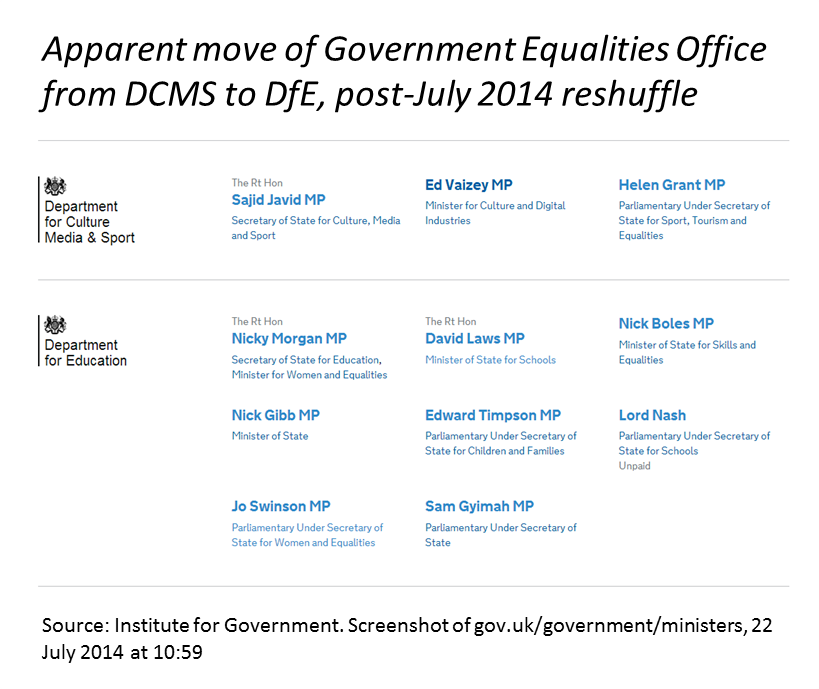
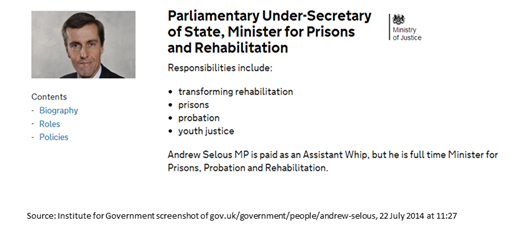
Every department experienced a change in the July 2014 reshuffle apart from the Scotland Office
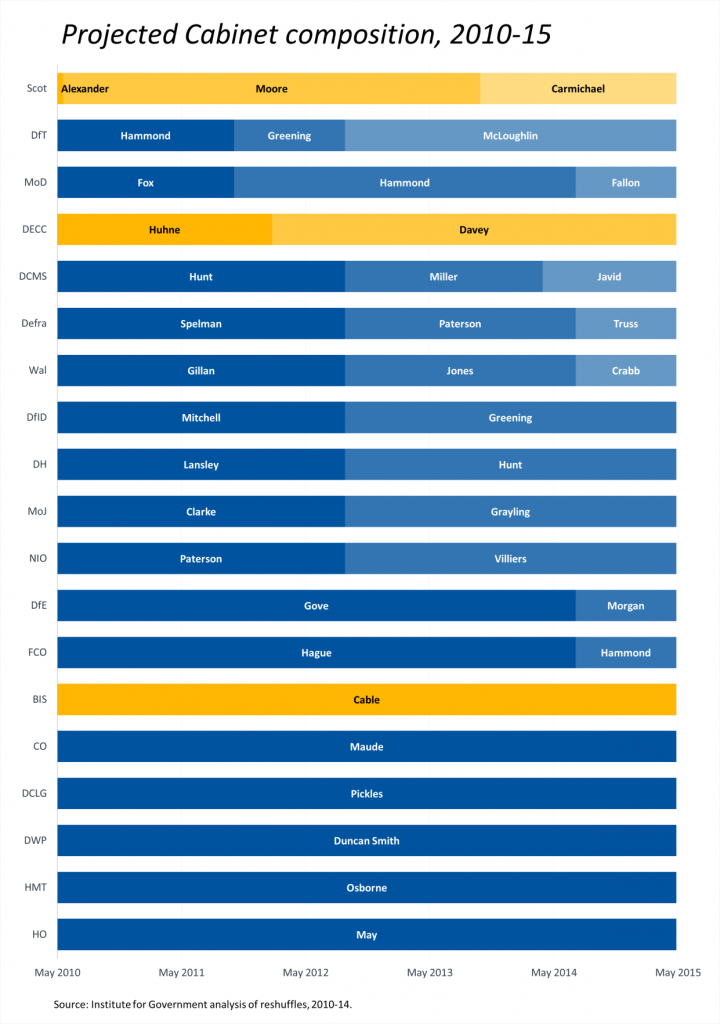
The number of women able to attend Cabinet has increased from five to eight, but the gender balance has barely changed at junior ministerial level
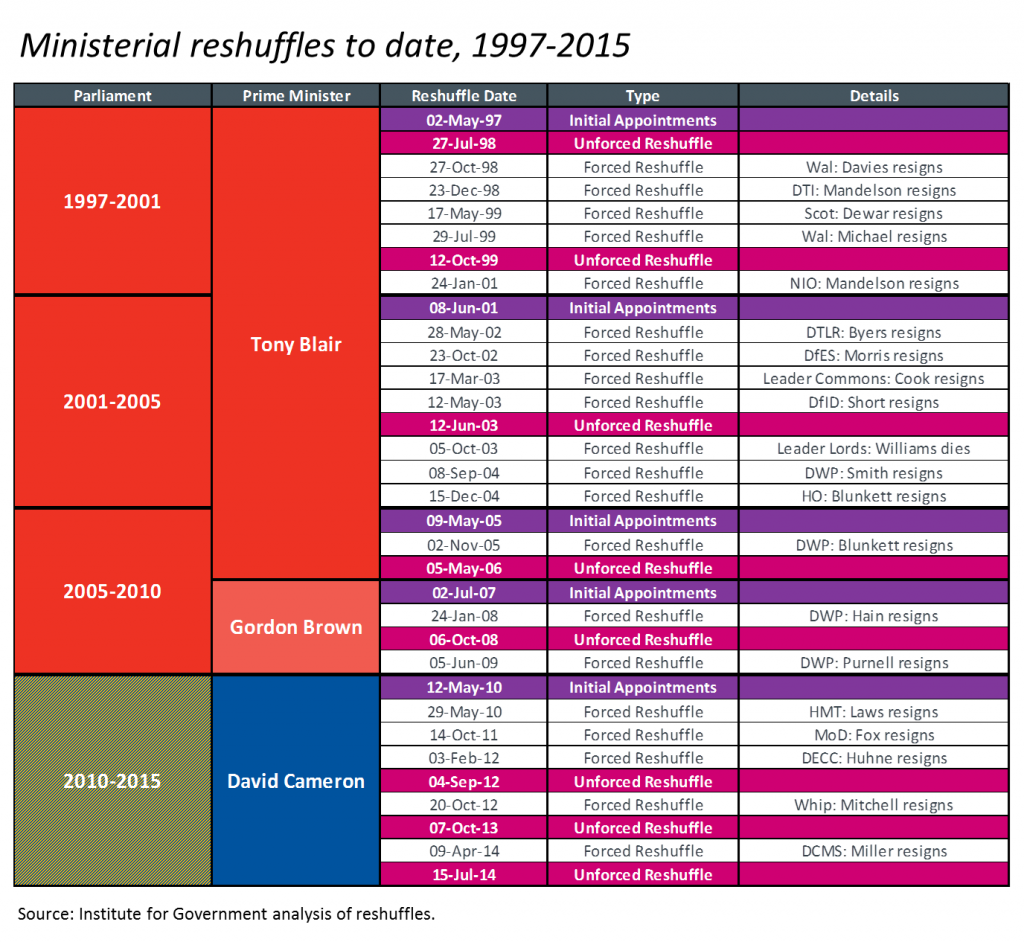
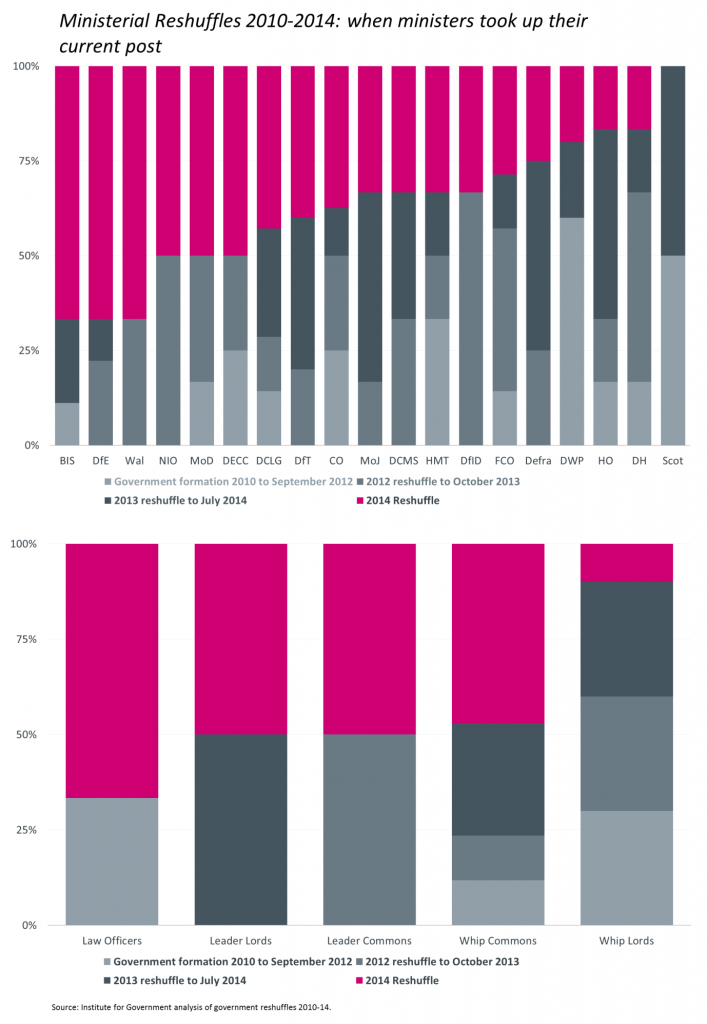
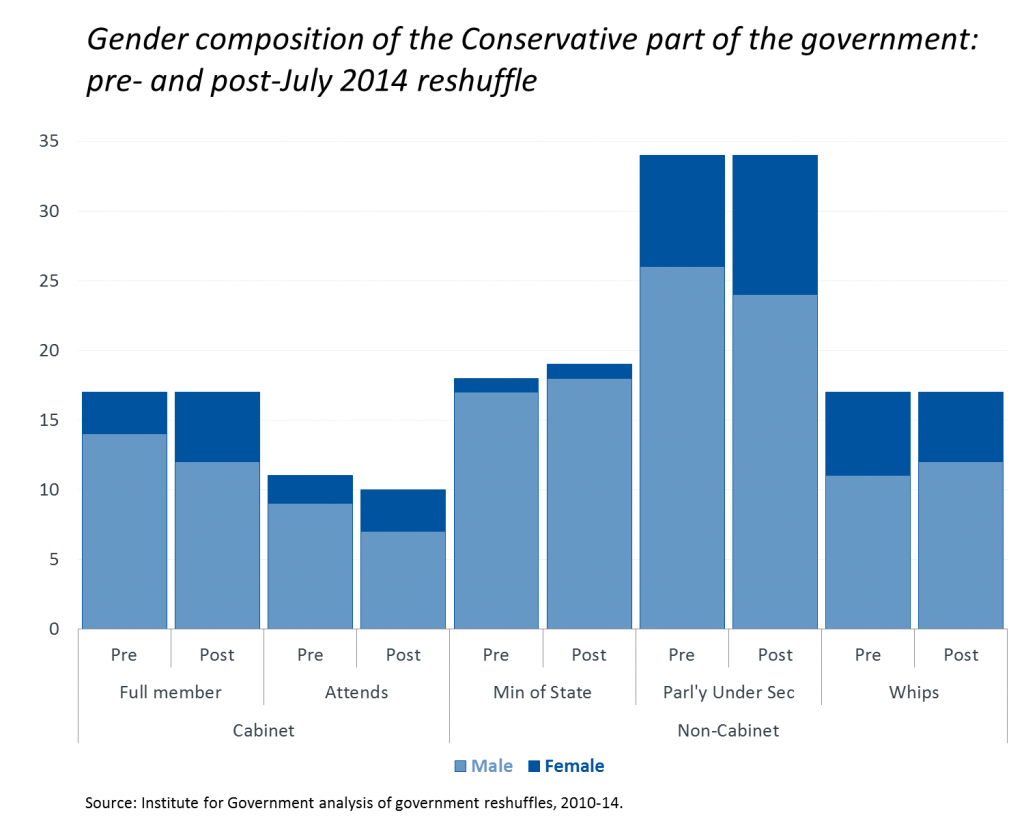
The percentage of Conservative women holding government posts is higher than the percentage of Conservative MPs who are women
While 16% of Conservative MPs are women and 23% of all MPs are women, women now account for 25% of the Conservative part of the government. 28% of the Lib Dem part of the government is female, compared to 13% of the party’s MPs. In total, women now account for just over 25% of ministers in government. 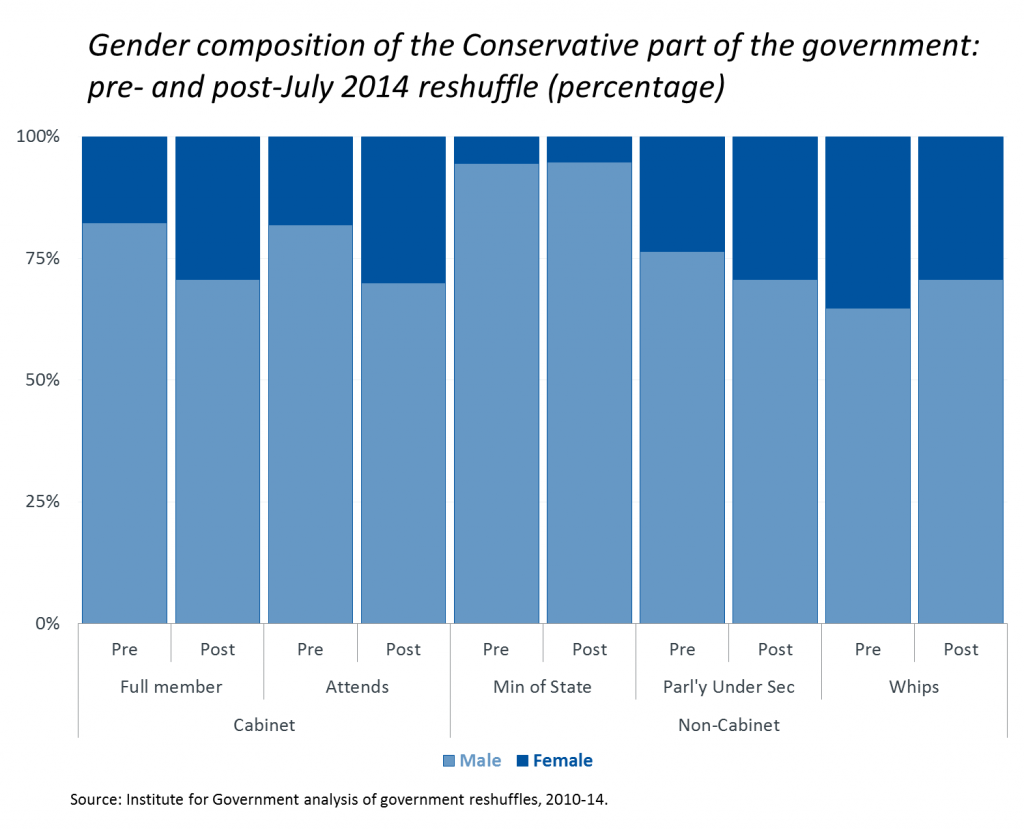
However, the Government Equalities Office appears to have moved department for a third time since the 2010 General Election.
We noted at the time (09:31 to be precise) that Nicky Morgan had been promoted not only to Secretary of State for DfE but also Minister for Women and Equalities (she had previously been Minister for Women, with Sajid Javid holding on to Equalities). But we didn’t spot any government announcement about the Government Equalities Office (GEO) following Morgan from DCMS to DfE. In fact, there wasn’t one (at least not one that we can find). But according to GOV.UK’s ‘Ministers’ page, the GEO appears to have moved: 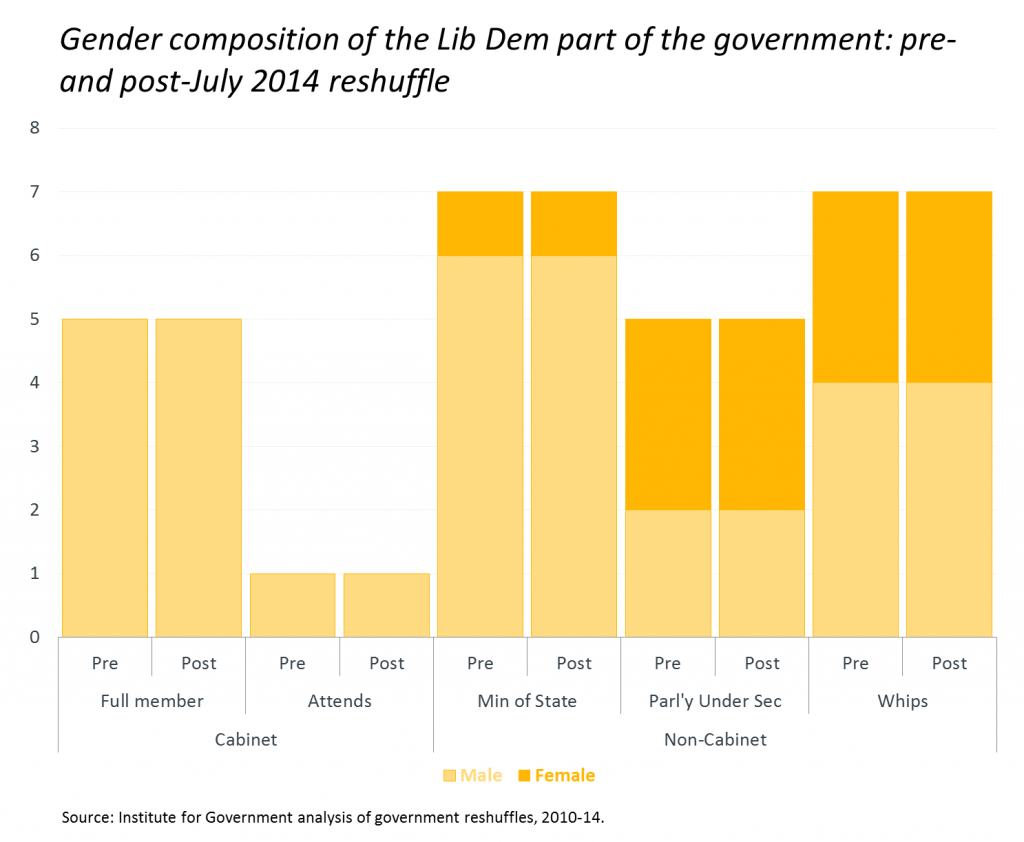
And finally…
There is a restriction on the number of paid ministerial posts at different levels of government (as helpfully explained in this House of Commons Library briefing paper). Perhaps that explains Andrew Selous’ appointment as an Assistant Whip as well as being the ‘full time Minister for Prisons and Rehabilitation’ at MoJ: 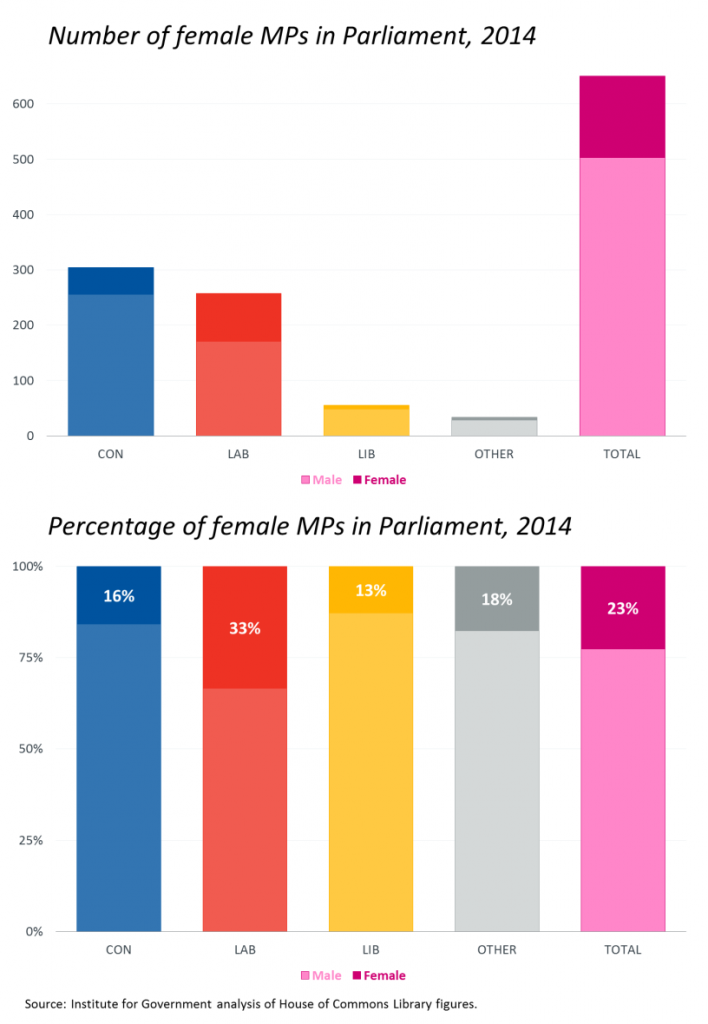
- Topic
- Ministers
- Administration
- Cameron-Clegg coalition government
- Publisher
- Institute for Government